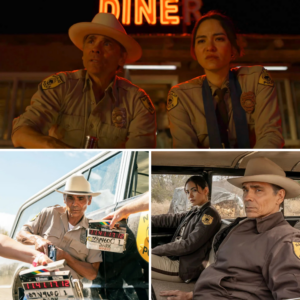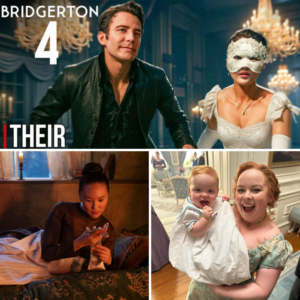Introduction
On June 24, 2025, a tragic accident involving a Tesla vehicle operating in its self-driving mode has reignited scrutiny over the safety of the company’s autonomous technology, leading to a new wave of lawsuits targeting Tesla and its CEO, Elon Musk. The incident, which claimed the life of a pedestrian in low-visibility conditions near Austin, Texas, has prompted the National Highway Traffic Safety Administration (NHTSA) to launch an investigation into Tesla’s Full Self-Driving (FSD) system. As the company faces mounting legal challenges and public backlash, this latest crash underscores a decade-long debate about the reliability of Tesla’s driver-assistance technology, its marketing claims, and the personal liability of Musk. With Tesla’s stock already under pressure and its robotaxi ambitions in the spotlight, the stakes have never been higher for the electric vehicle pioneer.
The Incident: A Deadly Misstep
The fatal accident occurred on June 23, 2025, when a 2024 Tesla Model Y, equipped with FSD, struck and killed a pedestrian on a foggy stretch of Highway 71 near Austin. According to preliminary reports from local authorities, the vehicle failed to detect the pedestrian, who was crossing the road during reduced visibility. The Tesla was traveling at approximately 45 mph, within the speed limit, but its FSD system did not initiate braking or evasive maneuvers, a failure attributed to the camera-based system’s struggle with fog. The driver, a 34-year-old software engineer from Austin, reported engaging FSD moments before the crash, claiming he was monitoring the system as required.
This incident marks the latest in a series of crashes linked to Tesla’s autonomous features, with the NHTSA now probing four recent collisions, including this fatality, involving low-visibility conditions like sun glare, fog, and dust. The agency’s investigation covers approximately 2.4 million Tesla vehicles from 2016 to 2024 model years, focusing on whether FSD can adequately respond to such challenges. Tesla has not yet commented officially, but Musk’s past defenses of the vision-only approach—relying on cameras rather than lidar—have come under renewed scrutiny, with experts questioning its efficacy in adverse weather.
The Lawsuits: Holding Tesla and Musk Accountable
The pedestrian’s family, supported by legal representatives, filed a wrongful death lawsuit against Tesla and Musk on June 24, alleging that the company’s marketing exaggerated FSD’s capabilities, leading to overreliance and preventable deaths. The lawsuit claims Tesla promoted FSD as a near-autonomous system, with Musk’s public statements—like his 2016 prediction of cross-country autonomy within a year—misleading consumers into believing it was safer than human drivers. The family argues that Musk, as CEO, knowingly oversold the technology despite internal awareness of its limitations, citing similar fatal crashes, including a 2019 Florida incident where a Model 3 drove under a tractor-trailer.
This lawsuit joins a growing list of legal actions against Tesla. In December 2024, the estates of three individuals killed in a New Jersey crash sued Tesla, alleging FSD and Autopilot failures. Earlier settlements, such as the 2024 case involving Apple engineer Walter Huang’s death in 2018, have kept financial details confidential, but the pattern suggests Tesla faces significant liability risks. Critics, including safety advocates, argue that Musk’s insistence on pushing FSD despite known flaws—highlighted by NHTSA’s 40-plus investigations into 23 deaths—amounts to negligence, potentially opening him to personal accountability.
Tesla’s Defense: A Familiar Narrative
Tesla has consistently defended its technology, asserting that Autopilot and FSD are driver-assistance systems requiring constant human supervision. The company points to user agreements and in-car warnings, arguing that accidents result from driver inattention rather than system defects. In a 2023 California trial, Tesla won by convincing a jury that a driver’s distraction, not Autopilot, caused a crash. This strategy is likely to be repeated, with Tesla blaming the Austin driver for not intervening. Musk has also claimed that FSD’s vision-only approach, using “direct photon counting,” mitigates issues like sun glare, though this claim has been challenged by experts who note camera limitations in fog.
The company’s reluctance to disclose crash data, as seen in its 2025 court filing to block a Washington Post request to the NHTSA, further fuels debate. Tesla argues that releasing such information could harm its competitive edge, but critics see it as an attempt to conceal safety issues. This opacity has intensified calls for transparency, especially as Musk prepares to unveil a robotaxi prototype in August, banking on autonomy to justify Tesla’s $1 trillion valuation despite a 34% stock drop year-to-date.
The Broader Context: A Company Under Pressure
Tesla’s autonomous ambitions are central to its identity, with Musk stating in 2022 that solving self-driving could determine whether Tesla is “worth a lot of money or basically zero.” The Austin robotaxi launch on June 22, 2025, aimed to bolster this narrative, but the subsequent fatality has cast a shadow. The service, limited to 10-20 Model Y vehicles with safety monitors, reflects a cautious rollout, yet it coincides with a 71% profit decline and a 13% sales drop in Q1 2025, driven by competition from BYD and backlash over Musk’s Trump alignment.
Musk’s political role as head of DOGE until May 2025, coupled with a $250 million Trump campaign donation, has alienated Tesla’s progressive customer base, fueling protests like “Tesla Takedown.” His recent feud with Trump over a tax bill, which cut EV subsidies, led to a 14% stock plunge on June 5, erasing $150 billion. This turmoil, alongside a Cybertruck recall and slowing EV demand, has left Tesla vulnerable, with former employees like Matthew LaBrot warning of collapse unless Musk steps down.
Implications: Safety, Regulation, and Market Dynamics
The Austin fatality amplifies concerns about Tesla’s safety record. Posts on X reflect public sentiment, with some blaming Musk’s overpromises for fostering overconfidence, while others defend his innovation track record. The NHTSA’s probe could lead to recalls or stricter regulations, especially as the Trump administration, influenced by Musk’s $250 million election support, considers scrapping crash reporting requirements—a move safety advocates fear will shield Tesla. This tension highlights a broader debate: whether Tesla’s aggressive push for autonomy prioritizes profit over public safety.
Competitors like Waymo, with 250,000 weekly trips and redundant sensors, contrast with Tesla’s approach, suggesting a more measured path to autonomy. Tesla’s reliance on its Austin gigafactory and AI expertise offers a cost advantage, but scaling FSD nationwide by 2026, as Musk plans, requires overcoming technical and regulatory hurdles. The lawsuits could delay this timeline, diverting resources to legal battles and potentially disrupting robotaxi development.
A Deeper Look: The Human Cost and Technological Limits
The human toll of these incidents is undeniable. Johna Story’s 2023 death in Arizona, struck by a Model Y on FSD, and Jeremy Banner’s 2019 Florida crash under a tractor-trailer mirror the Austin case, pointing to recurring issues with cross-traffic detection and visibility. The NHTSA’s finding that FSD accounts for 70% of driver-assist crashes underscores these limitations. Musk’s dismissal of lidar, favoring cameras, may save costs but risks lives, a trade-off critics argue he has downplayed.
Musk’s personal involvement adds complexity. Depositions from former engineers, like Richard Baverstock, suggest he directed Autopilot development, potentially linking him to design flaws. His 2016 video touting hands-off driving, despite disclaimers, has been cited as misleading, fueling lawsuits. As Tesla’s largest shareholder with a 12% stake, Musk’s financial and reputational stakes are immense, yet his divided focus—between Tesla, SpaceX, and politics—raises questions about leadership capacity.
Conclusion: A Crossroads for Tesla and Musk
The fatal crash of a Tesla self-driving car near Austin, followed by lawsuits against Tesla and Elon Musk, marks a critical juncture for the company. The incident exposes the fragility of Tesla’s autonomy push, testing its technological promises against real-world safety. For Musk, it’s a personal challenge—his vision of a driverless future hangs in the balance, threatened by legal, regulatory, and market pressures.
As the NHTSA investigation unfolds and lawsuits progress, Tesla’s next moves will define its trajectory. Will Musk double down on FSD, risking further incidents, or pivot to address safety concerns? The outcome could determine whether Tesla emerges as an autonomous leader or fades as a cautionary tale of ambition unchecked. For now, the world watches as a pioneering company and its visionary CEO face the consequences of a dream that has turned deadly.

